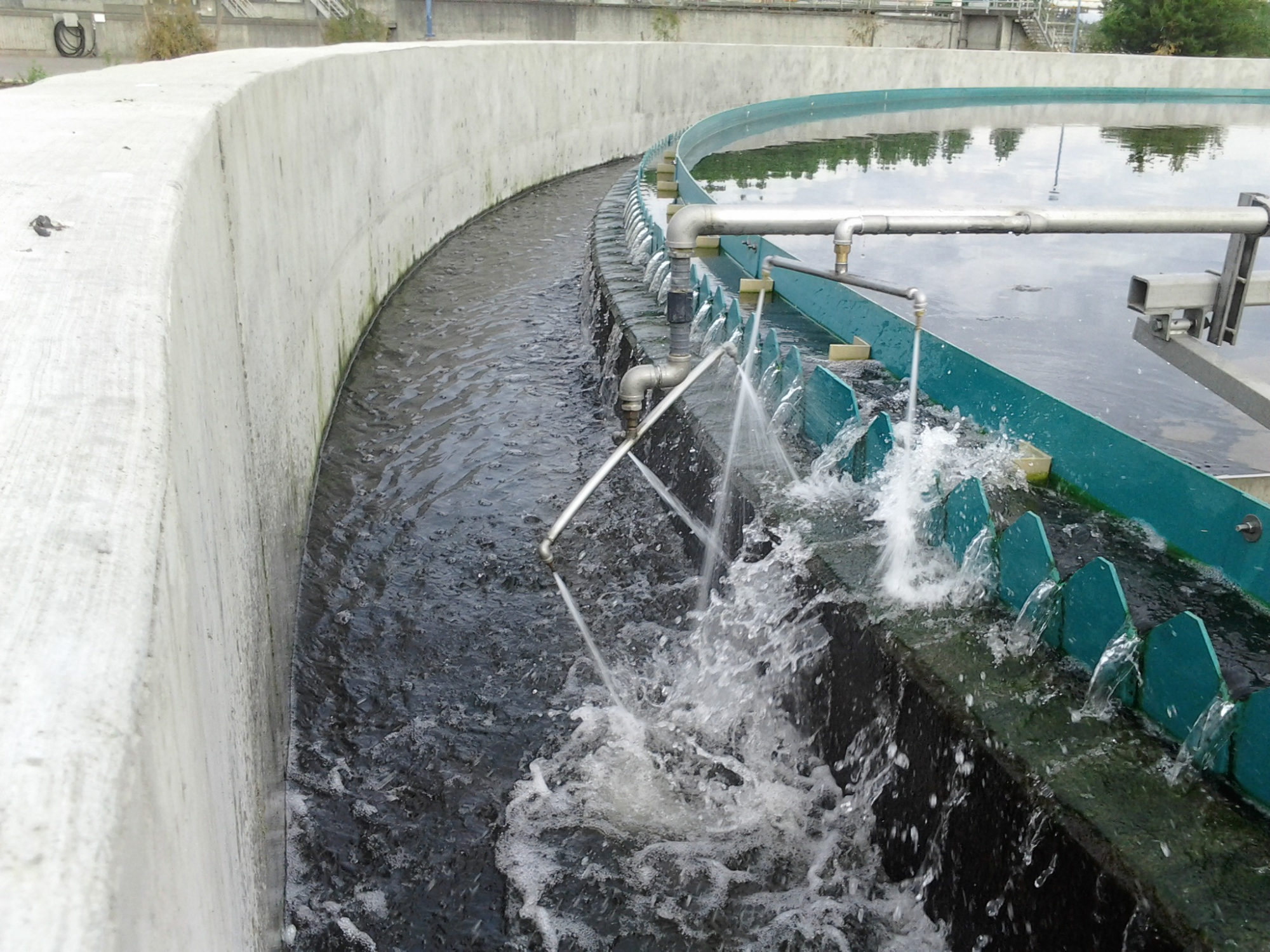In the mining industry, operators have long resigned themselves to the laborious and dangerous process of manually cleaning accumulated salts from the wastewater passing through the weirs, baffles, and troughs of clarifier and thickener tanks. The salt build-up can accumulate at a surprising rate and quickly harden to halt the function of the weirs, tanks, and related equipment until it is removed.
This impediment to mining production occurs when accumulated powdery salt silicates or carbonates are entrained in the wastewater. The water becomes highly oxygenated in the clarifier or thickener and the material hardens, turning into essentially submerged stalactites often in less than a day, according to Brent Gill, CEO of Evanston, WY-based GillTeq, a manufacturer of OSHA compliant, automated cleaning systems for mines, wastewater treatment facilities, pulp & paper mills, and chemical plants.
“When a half metre or one metre clarifier channel fills with hardened salt, mine operators have to physically remove the material using high pressure washers, icebreakers, and chisels,” says Gill. “It is important to keep those weirs clean. Otherwise, the tank stops working completely, and it can take days to remove all the accumulated material from the weir and the trough.”
To break up and remove the hardened salt, two workers are typically required, often for several hours per day. These workers climb into the tanks, where they are exposed to wastewater that contains bacteria, viruses, and other hazardous substances. Slippery surfaces have also caused operators to fall into tanks where sharp metal edges and other features cause injury and even death. Then there is the simple matter of the cost for this labour, not to mention the difficulty of finding qualified operators in the first place, for what is essentially a menial task.
According to Gill, the reason manual washdowns still occur today is simply that the mining industry has always done it this way, and in many cases is not aware that more effective solutions exist that are cost-effective, installed easily, and fully automated. “Today, there are solutions that utilize pressurized water to break up salt accumulation for easy removal from weirs, baffles, and launders of just about any configuration of clarifier or thickener tank,” says Gill. “Best of all, these systems can be tied into existing automation systems to eliminate any operator involvement and free those workers for more important tasks.”
Although small mining facilities may have only a few clarifiers or thickeners, larger facilities can have many with diameters of 70-200 ft or more. Given the massive surface area, salt can quickly grow and accumulate in places like weirs and troughs where it can affect function. “Failing to remove the salt build-up from a clarifier for as few as five days can clog it to such a degree that it becomes essentially non-functional,” says Gill. He notes that the mining industry has tried other techniques to address the algae problem besides manual washdowns, including automated brushes and weir covers, but these have largely proven ineffective as well.
Automated brushes can become overwhelmed with hardened salt accumulation and the bristles clogged to a point they cannot effectively break up the material until cleaned. Weir covers are an option, but only hide the problem since hardened salt can grow beneath the cover and still must be periodically removed. Moreover, each cover can cost up to $200,000 for a large tank and still require weekly cleaning. Unsatisfied with traditional options, Gill says the mining industry is increasingly turning to systems that are engineered to automatically remove accumulated salt from clarifiers and other tanks safely and efficiently.
One example is the WeirWasher ACS by GillTeq, which has been effectively utilised by the mining and wastewater industries. The automated cleaning system is designed to remove silt and other undesirable materials from the weirs, baffles and launders in clarifiers, thickeners, and similar tanks. The company also manufacturers other cleaning equipment including belt cleaners and biological control systems as well as stainless unitised baffled weirs.
The automated system uses a unique dual dynamic spray design that rotates a solid stream of non-potable water over all the clarifier surfaces that need to be cleaned. In this non-contact configuration, the water is designed to penetrate 10 to 14 in below the surface to effectively break up accumulating salt even at lower pressures from 50-70 PSI.
“By maintaining a constant spray every hour in rotation around the tank, the automated system breaks down and removes the accumulated softer, powdered material before it can oxidise and turn into hardened silicate, carbonate, or other material,” says Gill.
Each weir washer system is custom engineered for each tank to ensure maximum cleaning and to accommodate just about any configuration of clarifier or thickener. GillTeq has multiple patents associated with the manufacture and design of its products involving diverse spray, multi-nozzle, and dual dynamic spray applications and so is often sole-sourced. The fully automated system makes dangerous, manual cleaning unnecessary. The approach minimises labour and potential liability costs by providing consistent, effective daily cleaning.
“Mining facilities can run the automated system two to three hours a day. It turns off automatically and resumes cleaning the next day,” says Martin. “When you compare a clarifier that has an automated water-powered washing system with one that is manually cleaned, after a month the difference between the two is striking.”
The automated cleaning systems function similarly with round, square and rectangular clarifiers with a centre pier or travelling bridge/chain and flight and can clean all trough geometries and configurations such as multisided troughs, troughs with internal supports, concrete/pipe supported obstructions or any other design. Gill concludes: “Although mining facilities have long resorted to laborious manual methods to clean accumulated salt from clarifiers and other tanks, the time has come to consider safer, OSHA compliant, more cost-effective automatic solutions that will significantly improve operation and lower maintenance costs.”











